Catholicism
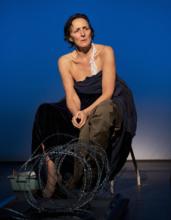
How far can one go in retelling a Bible story, adding things that are not in the original? In The Testament of Mary, Colm Toibin goes a long way.
His 2012 book is now a Broadway play presenting a view of the mother of Jesus so different from pious tradition that it angers some Christians, creating a “new,” intellectually and spiritually challenging Virgin Mary.
Yet in the end, Toibin’s searingly human Mary may be ultimately more accessible than the Mary of porcelain perfection set high on a pedestal.
The Irish writer, who has written about his strong Catholic childhood, imagines Mary 30 years after the crucifixion of her son. She lives as a virtual prisoner of two of Jesus’ disciples, still mourning her son’s death, bitter at what has happened since, and seeking consolation from pagan idols, which make more sense to her than what happened to Jesus.
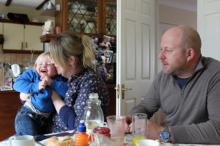
DUBLIN, Ireland — Ruth Bowie was in the throes of grief when she found out she would never know her unborn child. At the 12-week mark, a pregnancy scan showed the baby had anencephaly, a fatal condition in which a portion of the brain and skull never form.
Bowie, 34, a pediatric nurse, knew the implications of the birth defect even before the doctor explained. But the life-changing news didn’t stop there.
“The doctors said we will continue to look after you, or else you can choose to travel,” she recalled.
Put another way, if she and her husband wanted to seek an abortion, they would have to travel to England to end the pregnancy.
SOME BOOKS MAKE you want to sit down with the author on a sunny afternoon for a nice cup of tea. You would be excited to talk about how the book resonated with your own journey. For me, From Willow Creek to Sacred Heart: Rekindling My Love for Catholicism, by Chris Haw, is such a book.
Haw, a young, passionate, and deeply self-reflective theologian, shares his spiritual memoir. Part one recounts Haw's faith journey from a childhood as a lukewarm Catholic to teenage years at the evangelical megachurch Willow Creek, to college—including brief but powerful months in Belize, as well as days of protest against the Iraq war—and eventually to his present life in the apocalyptic landscape of Camden, N.J., where he returned to the Catholic Church.
Part two presents Haw's theological reflections on a variety of questions he has raised along his journey. He also focuses on common objections against the Catholic Church, such as the nature of the Mass as a sacrifice, the church's reliance on human tradition over the Bible, its hierarchical system, alleged ritualism, embellished architecture and ornaments, devastating scandals—including child molestation—and so on. Haw explores such challenging issues thoughtfully and courageously, while humbly accepting that he still struggles with them. Despite it all, Haw longs to see beauty and hope furthered through the Catholic Church.
I am a Catholic convert. I was raised in a Methodist family and trained in Protestant seminaries. By the time I decided to convert to Catholicism, I was starting my first year in the doctoral program of theological studies at Emory University. Feminist theology played a central role in both my theological education and spiritual formation, and it continues to today.
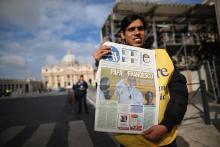
When I heard about the white smoke on Wednesday, I wrote on my Facebook wall: “Habent Papum.” My own church doesn’t use Latin, so I had to use Google translate to figure out how to change the “We have a pope” of “Habemus Papam” into “They have a pope.” I got a few good laughs for my cleverness before a Catholic friend humbly reminded me that it wasn’t just their pope, and that I’d have to deal with him too ... he has no idea how prophetic his words have turned out to be.
You see, I didn’t expect to tune in at all to the election of the pope. I was raised in the Catholic Church and received its early sacraments before my family joined the Episcopal Church (my father’s tradition). I spent plenty of time in high school and after defending its practices and traditions against atheists and Protestant friends and colleagues, and I more than made up for that by pressing hard on my Catholic friends on the nuances I didn’t understand. But mostly I only paid attention when the Catholic Church said something publicly or took a political stand on an issue I cared about.
But on Wednesday, the white smoke got in my eyes, and rather than confusing my sight, it’s made things a little clearer.
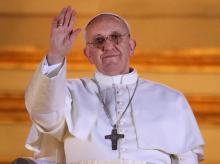
Francis. Pope Francis. This could be good news for the Catholic Church, for the whole church, and for the world. Let’s hope and pray so.
Jorge Bergoglio, the Argentinian cardinal from Buenos Aires, will be the first pope from Latin America and the first outside of Europe in a millennium. That’s good news from the start. And the world is now learning about the 76-year-old new pontiff whose election caused the white smoke to rise in the night skies of Rome to the cheers of tens of thousands of people in St. Peter’s Square. A Jesuit scholar, he seems to be a humble man who lives simply, choosing to live in a small apartment instead of the archbishop’s palace, and travel on buses and trams instead of in the church limousine.
Will simplicity and social justice become the witness of the Roman Catholic Church around the world — and will it emanate from the first pope from the Global South, which is clearly the growing future of the church? What good news that would be.
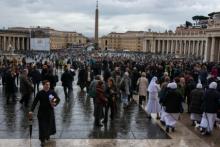
VATICAN CITY — Black smoke from the chimney atop the Sistine Chapel signaled that the first day of the conclave ended without the election of a new pope.
Even if the first-round outcome was largely expected, thousands of people on Tuesday braved the inclement Roman weather to wait for the result of the vote. They slowly filled up St. Peter’s Square as the evening progressed, with their eyes fixed on the small chimney.
Cries of disappointment erupted from the crowd when the black smoke appeared instead of the white smoke that would herald a successful election.
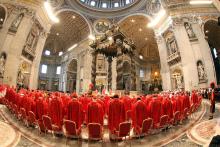
VATICAN CITY — The doors of the Sistine Chapel closed behind the cardinals on Tuesday, marking the official start of the conclave that will elect the successor to Pope Benedict XVI.
The 115 cardinal-electors walked in procession into the Sistine Chapel, singing hymns and invoking the Holy Spirit, before filing under Michelangelo’s “Last Judgment” and taking a solemn oath of secrecy on everything that will happen during the conclave.
At the end of the oath-taking ceremony, the master of papal ceremonies, the Rev. Guido Marini, ordered the “extra omnes” (Latin for “everybody out”).
Cardinals will be sequestered inside a Vatican residence until a candidate receives the two-thirds majority needed for election to the papacy.
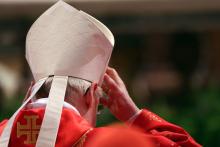
As the College of Cardinals begins its conclave today in Rome to select the next Pope, I find myself intensely interested in the outcome. Since I am an Anabaptist, a child of the “radical” Reformation, I’ve spent some time reflecting on why that is so.
First, the Roman Catholic Church is an unbroken link to the first century Roman church for all Christians, no matter our denomination. Before the so-called “Great Schism” between the eastern and western church in 1054, the Christian church led from Rome was THE primary Christian church. No matter if we are Eastern or Western Christians, no matter how Protestant or Anabaptist some of us are, the Church of Rome is still in some way our Mother church.
Second, it remains the largest Christian tradition in the world.
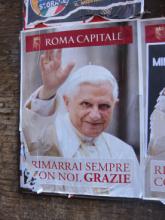
VATICAN CITY — Amid all of the prognosticating about who the cardinals could choose as the next pope in the conclave that starts here on Tuesday, one reliable thread has emerged: the desire to elect a pontiff who can be a pastor to the world as well as a taskmaster to the Roman Curia.
Finding such a combination in a single man, of course, may prove difficult if not impossible, which adds to the almost unprecedented level of uncertainty surrounding this papal election.
So if anything is possible, some say it might be better to reverse the prevailing wisdom — look for a pope who will talk tough to Catholics (and the world) while shepherding the Curia with a firm hand in order to better police the wayward.
The prospect might appall progressives and others who were happy to see the end of Pope Benedict XVI’s papacy, but it has enough appeal to conservatives that they are trying to make the case.
One reason for their sense of urgency is that Cardinal Joseph Ratzinger turned out to be more of a papal pussycat as Benedict XVI than the watchdog of orthodoxy that he had been for decades while serving under John Paul II.
Is now the time for a pope who could be more of a Ratzinger than a Benedict?
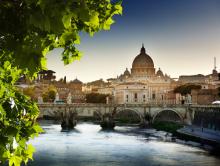
If you want a crash course on how papal politics really works, look no further than the saga of Scottish Cardinal Keith O’Brien.
On Friday, Britain’s most senior Catholic cleric grabbed headlines by telling the BBC that priestly celibacy was “not of divine origin” and that he’d be “happy” if priests had the option to marry.
On Saturday, O’Brien was back in the news, this time after four men reportedly accused him of “inappropriate acts” dating back to the 1980s.
By Monday, O’Brien had resigned as archbishop of Saint Andrews and Edinburgh and announced he would skip the conclave.
From champion of married priests to disgraced churchman within 72 hours, O’Brien’s trajectory is stunning but also emblematic of the frenetic and fever-pitched campaigning that occurs during the tiny window between a pope’s death or resignation and the election of his successor.
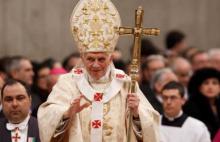
VATICAN CITY — In a move that took the world by surprise, Pope Benedict XVI announced on Monday that he will become the first pope in 600 years to resign, with plans to step down on Feb. 28.
“After having repeatedly examined my conscience before God, I have come to the certainty that my strengths, due to an advanced age, are no longer suited to an adequate exercise of the Petrine ministry,” Benedict told cardinals as they gathered in Rome for the proclamation of new saints.
Vatican spokesman Rev. Federico Lombardi said preparations for the conclave that will elect Benedict’s successor are in the early stages.
A papal election could be expected “within 10 to 15 days,” he said. “We should have a new pope by Easter.”
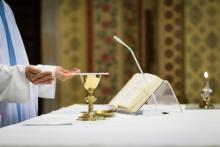
ST. LOUIS -- As Drew Burkemper got up to preach, the weight of his task was evident. His classmate at Kenrick-Glennon Seminary, Adam Maus, had just pretty much killed it.
Like Burkemper, Maus and other Catholic seminarians were told to prepare and deliver to his class a homily for an imaginary event.
Maus’ scenario had been a wedding between a 42-year-old bride with four children and her groom, who had recently returned to the Catholic Church. The nine other seminarians in the room loved his approach, showering him in glowing feedback.
Burkemper was up next, faced with a preaching scenario that would challenge any 23-year-old priest-to-be. His homily was for a marriage between a Catholic man and a Jewish woman.
As he began, he worked hard on his delivery, as his professor had taught him. "Father Wester is big on delivering the homily,” Burkemper said later. “Not just reading it.”
The Rev. Don Wester, pastor of All Saints Catholic Church in St. Peters, Mo., is Kenrick’s lecturer of homiletics -- the art of preaching.
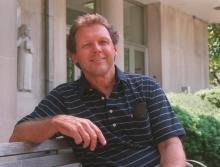
A long-running struggle between Catholic authorities and the Rev. Roy Bourgeois over his support for ordaining women has ended with Bourgeois’ dismissal from the priesthood and his religious order, the Maryknoll Fathers and Brothers.
A statement from Maryknoll on Monday confirmed that the Vatican’s office for orthodoxy, the Congregation for the Doctrine of the Faith, laicized Bourgeois last month.
The move stems from Bourgeois’ participation in an August 2008 ordination rite in Lexington, Ky., for Janice Sevre-Duszynska. The ceremony was not recognized by the Vatican and took place under the auspices of a group called Roman Catholic Womanpriests, which rejects the church teaching on the all-male priesthood.
CNN reports:
Emboldened by the re-election of President Barack Obama, a cadre of liberal Catholic activists and groups is waging a campaign alleging that America's Catholic bishops are out of touch with Catholic laypeople.
The Catholic bishops, who are in Baltimore this week for a quarterly meeting, spoke out against the Obama administration during the election cycle over what they said were White House violations of religious freedom.
Some bishops also spoke out against legalized gay marriage and abortion rights, positions embraced by many Republicans.
A Sunday opinion piece in the National Catholic Reporter by Thomas Reese, a Jesuit priest at Georgetown University, hammered the bishops for their public proclamations during the campaign, saying the church leaders' “political strategy … is not working.”
Read more here:
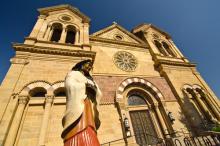
SYRACUSE, N.Y. — Sister Kateri Mitchell was born and raised on the St. Regis Mohawk Reservation along the St. Lawrence River. She grew up hearing stories about Kateri Tekakwitha, the 17th-century Mohawk woman who will be declared a saint in the Roman Catholic Church on Sunday.
She has long admired Tekakwitha for her steadfast faith and her ability to bridge Native American spirituality with Catholic traditions. In 1961, Mitchell joined the Sisters of St. Anne, and since 1998 she has served as executive director of the Tekakwitha Conference in Great Falls, Mont., a group that has spread Tekakwitha’s story and prayed for her canonization since 1939.
“We’ve been waiting a long time for this,” she said of the canonization at the Vatican. “It’s a great validation.”
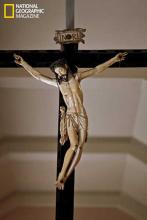
Since the ban on international trade of ivory in 1989, the ivory black market has been on the rise, and a National Geographic investigation found that demand for religious art pieces carved out of the precious material has played a considerable role.
“No matter where I find ivory, religion is close at hand,” said investigative reporter Bryan Christy, whose article, “Ivory Worship,” is included in the new edition of National Geographic magazine, released Sept. 14.
“Elephant poaching levels are currently at their worst in a decade,” Christy wrote. The Convention on International Trade in Endangered Species of Wild Fauna and Flora (CITES) estimates that at least 25,000 elephants were poached in 2011, mostly for their ivory tusks.
Philippine Catholics use ivory to construct crucifixes, figures of the Virgin Mary and other icons. The province of Cebu is particularly known for its ivory renditions of the Santo Nino de Cebu (Holy Child of Cebu), used in worship and celebration.
Today marks the feast day of St. Ignatius of Loyola, Spanish founder of the Jesuits. View the video below to learn more about St. Ignatius from Fr. James Martin, SJ.
Who Cares About the Saints?...Ignatius from Loyola Productions on Vimeo.
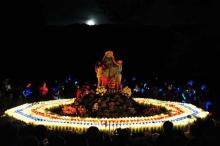
BIRMINGHAM, Ala. — Could a Virgin Mary statue under a pine tree in the middle of a cow pasture in rural Alabama one day become an officially recognized international pilgrimage site of the Roman Catholic Church?
Yes, it could, said Michael D. Murphy, chairman of the anthropology department and a professor of anthropology at the University of Alabama who has specialized in studying the role of Virgin Mary apparitions in the Catholic Church.
“Without a doubt,” Murphy said. “Some very unusual places have ended up becoming pilgrimage sites.”
Marija Lunetti, the visionary who has been reporting daily visions of the Virgin Mary since she was a teenager in Medjugorje, Yugoslavia, had two outdoors apparitions in a field under a pine tree in Shelby County, Ala., during a highly publicized “five days of prayer” July 1-5 at Caritas of Birmingham.
Lunetti was one of six Medjugorje youths who began reporting apparitions of Mary in 1981. She was 16 at the time and known as Marija Pavlovic. Now 47, married with four children and living in Italy, Lunetti continues having daily visions.
She has been visiting Alabama since 1988, when she came to donate a kidney at UAB Hospital for her brother, Andrija Pavlovic. She had apparitions in the hospital and at the home of Caritas of Birmingham founder Terry Colafrancesco.
EDITOR'S NOTE: Melinda Gates talks to the Guardian (UK) newspaper about reconciling her Catholic faith — the wife of Microsoft chairman Bill Gates says she attends mass regularly — with her work promoting family planning. Gates was in London this week to discuss promoting contraception in the developing world with UK government representatives. The Gates Foundation hopes to encourage donor pledges that will enable 120 million women to have access to contraceptives by 2020.
